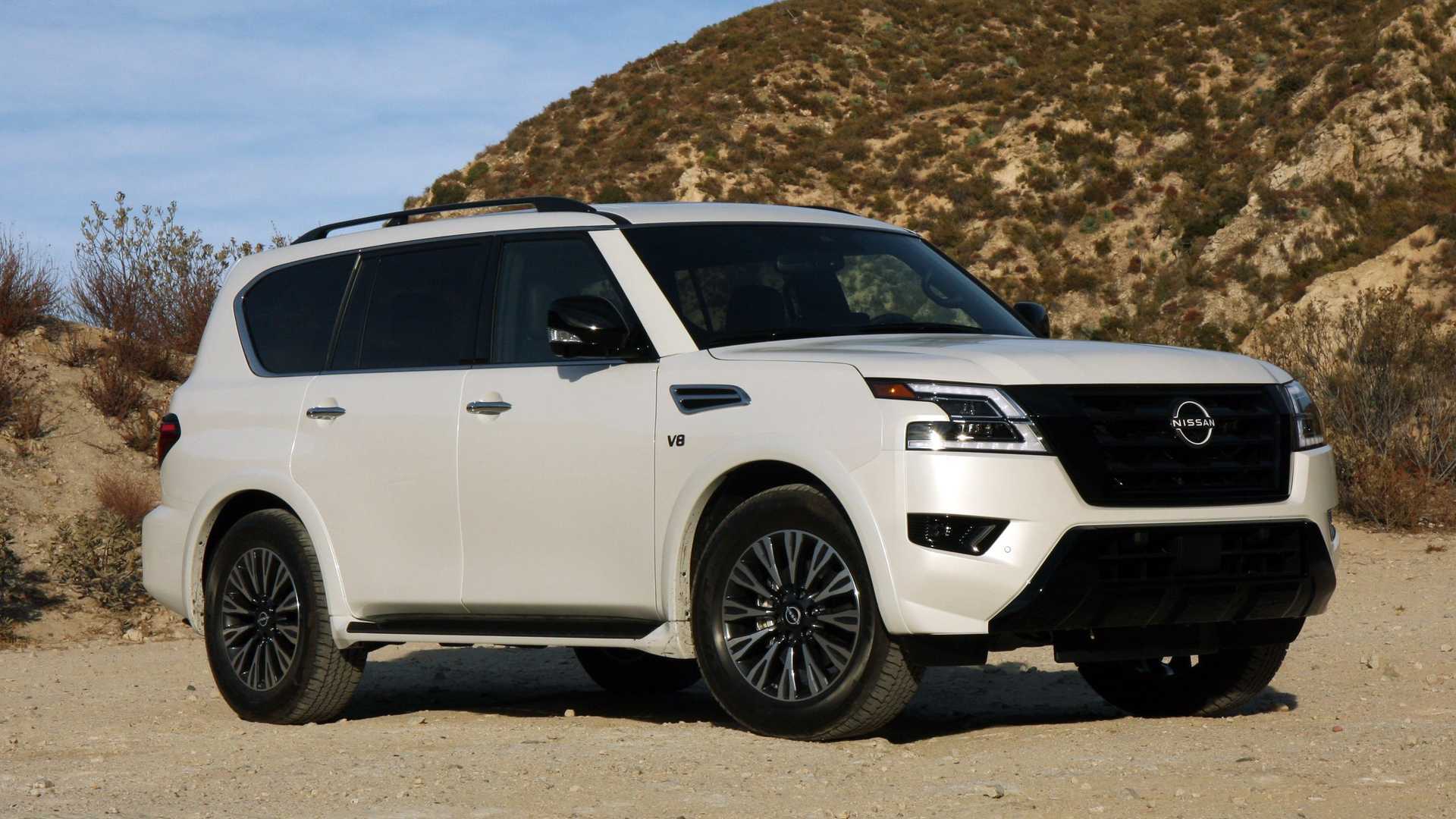Winter driving is a unique challenge that tests the reliability, performance, and resilience of vehicles in ways that other seasons rarely do. For drivers living in cold climates where temperatures often plunge below freezing, the battle against harsh weather conditions is a daily reality.
Snow, ice, and bone-chilling cold don’t just make driving uncomfortable—they can also have serious mechanical consequences on a vehicle’s engine and critical systems.
One of the most crucial aspects of winter vehicle performance is the ability to start and operate an engine smoothly despite the frigid temperatures. This is where factory-installed block heaters and cold-weather preparation packages come into play, offering a crucial edge to SUVs designed to handle severe winter environments.
A factory-installed block heater is a device integrated by the manufacturer into the engine’s cooling system that warms the engine block and the coolant when the vehicle is parked. This prevents the engine oil from thickening excessively, which is one of the primary issues that cold temperatures create for combustion engines.
When oil thickens, it increases resistance and friction within the engine’s moving parts, making it harder to start and putting extra strain on the battery and starter motor.
By keeping the engine warm before starting, block heaters reduce wear and tear, improve fuel efficiency during cold starts, and lower harmful emissions that tend to spike when engines are cold. In effect, a block heater is a preventative tool that extends the life of the engine and enhances reliability in cold conditions.
But block heaters are just one element of comprehensive cold-weather packages that some manufacturers include in their SUVs. These packages often encompass a suite of features designed to improve both vehicle performance and occupant comfort during winter.
Heated seats, heated steering wheels, remote start systems, heavy-duty batteries, all-weather floor mats, and enhanced traction control systems are commonly bundled into these packages.
Together, they create a holistic winter driving solution that goes beyond engine protection to ensure driver and passenger comfort and safety. These features are especially valuable for those who live in regions with long, harsh winters where daily driving in subzero temperatures is unavoidable.
However, the landscape of cold-weather preparation is uneven across the SUV market. Many popular SUVs—particularly in the compact and midsize segments—do not come equipped with factory-installed block heaters or formal cold-weather prep packages.
While these vehicles may offer heated seats or remote start as optional features, they often lack the mechanical cold-weather readiness that block heaters provide.
For drivers in colder regions, this means they must either seek aftermarket solutions or accept the increased risk of difficult cold starts, accelerated engine wear, and reduced fuel economy. This gap can lead to increased maintenance costs, more frequent battery replacements, and less reliable winter performance overall.
Understanding which SUVs come equipped with factory-installed block heaters and cold-weather preparation and which do not is essential for consumers making purchasing decisions in colder climates.
A vehicle’s ability to start reliably and operate efficiently in freezing temperatures directly impacts safety, convenience, and long-term ownership costs. Moreover, knowing the limitations of SUVs without these features helps owners plan proactive measures, such as installing aftermarket block heaters, choosing winter-grade oils, or securing heated storage.
In this article, we will explore five SUVs that come with factory-installed block heaters and comprehensive cold-weather preparation, examining how these features enhance winter reliability and comfort.
We will then analyze five popular SUVs that lack these factory-installed cold-weather features, discussing the challenges their owners face during winter and the additional steps required to prepare these vehicles for cold climates.
Through this exploration, readers will gain insight into the importance of factory cold-weather readiness and how it shapes the winter driving experience. Whether you live in a northern state, a mountainous region, or simply want peace of mind during cold snaps, understanding your vehicle’s cold-weather capabilities is key to making an informed choice.
Also Read: 5 EVs With the Best Torque Delivery and 5 With Lag
SUVs with Factory-Installed Block Heaters

1. Ford F-150 (Selected SUVs/Trims)
The Ford F-150 is one of the most iconic and widely used full-size trucks in North America, but many may not realize its crossover appeal as a versatile SUV alternative, particularly in crew cab or SuperCrew configurations.
Recognizing the harsh realities of northern winters, Ford equips many F-150 models—especially those destined for colder climates—with factory-installed block heaters as part of their cold-weather packages.
This feature is designed to keep the engine coolant warm while the vehicle is parked, preventing the oil and fluids from thickening excessively in freezing temperatures. For owners, this means a much smoother and more reliable engine start in the dead of winter, which is critical for both daily commutes and rugged work tasks.
Engine reliability in extreme cold is a challenge that the F-150 tackles head-on with its block heater, especially given the variety of engines offered. Whether it’s the robust 3.5L EcoBoost V6 or the powerful 5.0L V8, these engines benefit greatly from preheating.
Cold starts without a block heater can cause oil to congeal and increase friction between moving parts, accelerating wear. By warming the engine block and fluids, the heater reduces this stress, extending engine life and improving long-term reliability. This feature also facilitates quicker warm-up times, which can be crucial when temperatures drop below -20°F (-29°C).
Additionally, Ford’s cold-weather package often bundles the block heater with other amenities that enhance winter driving comfort and safety. Heated front seats, heated steering wheels, remote start systems, and heavy-duty batteries are common inclusions that make life easier for drivers facing snow, ice, and frigid mornings.
The remote start, in particular, allows drivers to start warming their truck before stepping outside, a convenience that complements the block heater’s engine preheat by also warming the cabin. These thoughtfully integrated features underscore Ford’s commitment to making the F-150 a dependable vehicle in winter’s toughest conditions.
The block heater also has environmental benefits. By reducing cold-start emissions, the F-150 equipped with a block heater operates more cleanly and efficiently during the warm-up phase, a time when engines typically produce higher emissions due to incomplete combustion.
Moreover, the reduction in fuel consumption during these cold starts contributes to better overall economy, an important consideration for a vehicle that can be driven daily in icy environments. For drivers who spend significant time outdoors or in remote areas during winter, having a factory-installed block heater on their F-150 is a significant advantage.
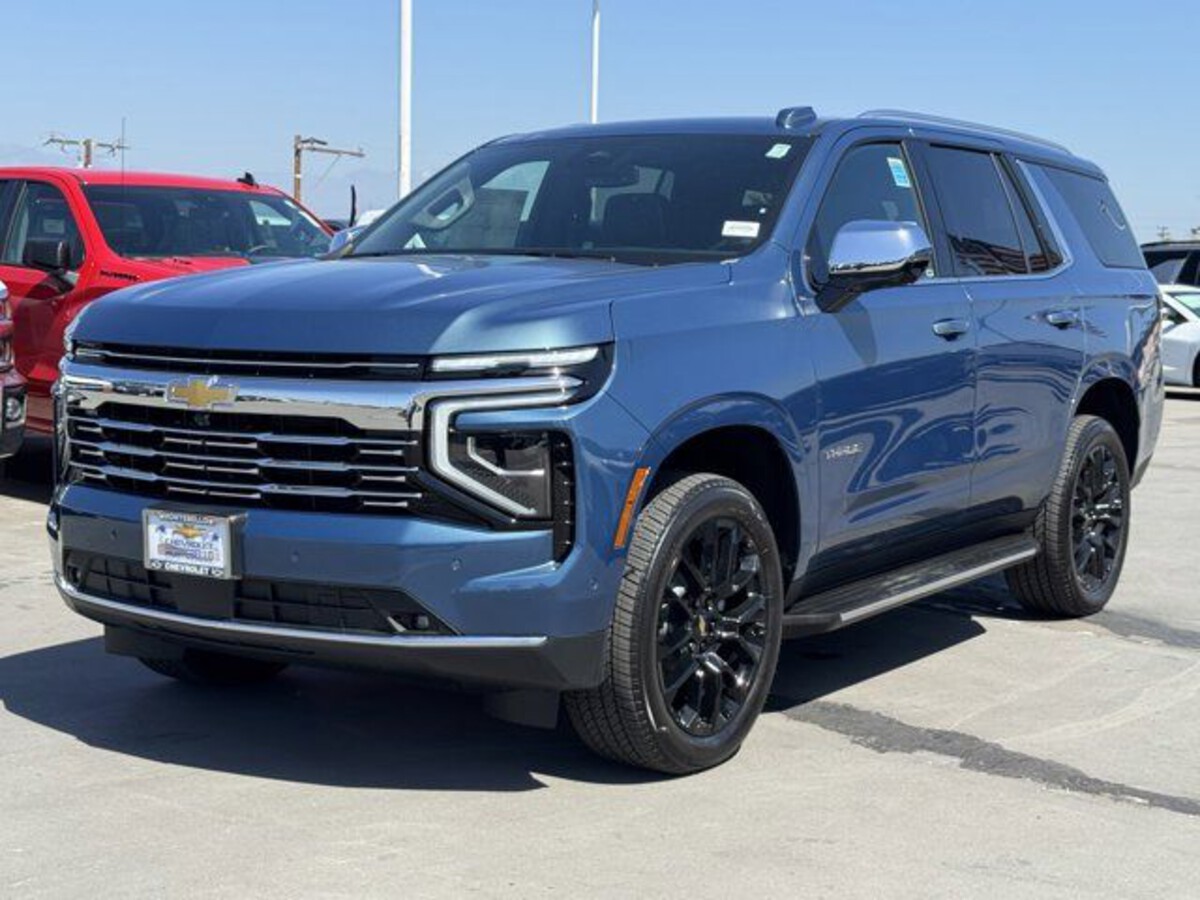
2. Chevrolet Tahoe
The Chevrolet Tahoe is a flagship full-size SUV that has earned a reputation for combining rugged capability with family-friendly comfort. In regions where winter temperatures routinely dip below freezing, the availability of factory-installed block heaters on many Tahoe trims reassures drivers that their powerful V8 engine will start reliably even in the coldest conditions.
By maintaining engine warmth during cold spells, the block heater prevents many common winter engine ailments, including thickened engine oil and excessive battery drain.
The block heater on the Tahoe works by warming the coolant circulating through the engine block, which in turn helps maintain a higher temperature in the oil and metal components. This translates to easier engine turnover and faster achievement of optimal operating temperatures, which is critical for engine efficiency and durability.
Especially with the Tahoe’s larger, heavier engine, these benefits are amplified during the winter months. Without a block heater, drivers may experience rough starts, increased wear and tear, and higher fuel consumption, all of which can be avoided with this factory-installed feature.
Chevrolet’s cold-weather packages extend beyond just the block heater to include other driver comforts that ease winter hardships. Features such as heated leather seats, heated steering wheels, remote start, and specialized winter tires ensure that Tahoe drivers remain comfortable and safe during snowy commutes or long road trips in subzero conditions.
These features reflect Chevrolet’s understanding that cold-weather performance is about more than just engine health—it’s about total vehicle usability and occupant comfort.
Lastly, the factory-installed block heater in the Tahoe offers peace of mind because it’s integrated by the manufacturer and covered under warranty. Unlike aftermarket block heaters, which may vary in quality and installation precision, the OEM block heater is designed specifically for the Tahoe’s engine configuration, guaranteeing compatibility and reliability.
This factor is especially important for drivers who rely heavily on their SUVs during winter, as it reduces downtime and potential repair costs related to cold-weather engine issues.
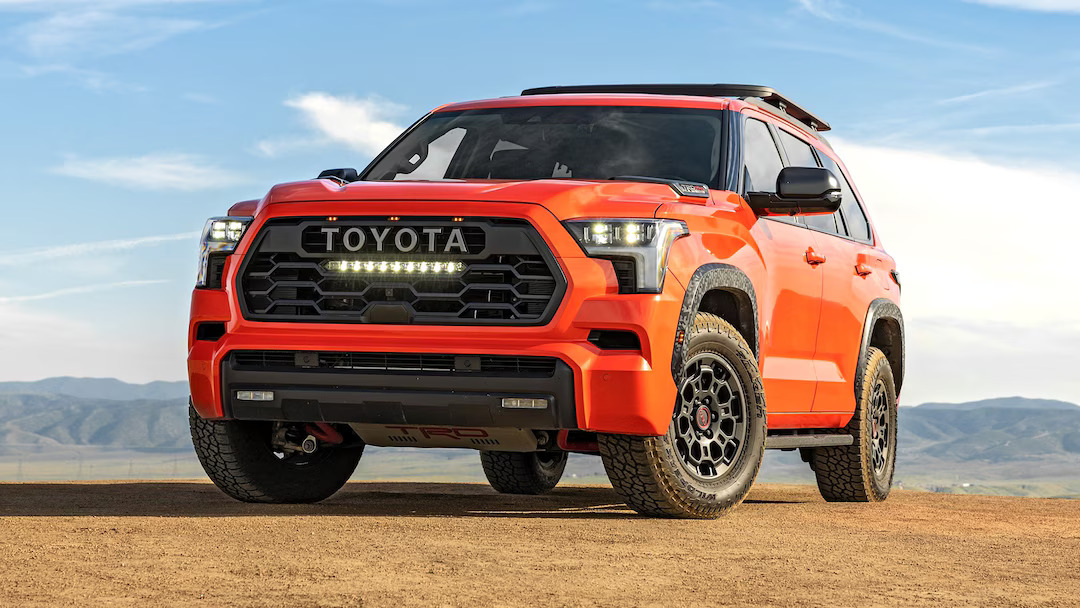
3. Toyota Sequoia
Toyota’s full-size Sequoia is known for its legendary reliability, and part of this reputation is due to the thoughtful inclusion of factory-installed block heaters on many models intended for cold climates.
The Sequoia’s large 5.7L V8 engine is powerful but can be vulnerable to cold-start damage if not properly warmed, making the block heater a vital component for owners in northern areas.
This device gently warms the engine block and coolant, preventing oil thickening and ensuring easier cold starts, which significantly reduces engine stress and improves drivability in subzero temperatures.
Beyond the block heater, Toyota’s approach to cold-weather readiness in the Sequoia includes a suite of features aimed at comfort and performance. Heated front and rear seats, heated mirrors, remote start, and even advanced traction control systems are often bundled in cold-weather packages.
This holistic approach means the Sequoia is not just capable of starting in the cold, but also comfortable and safe throughout the winter season. The seamless integration of these systems means owners can enjoy winter driving with fewer worries about engine reliability or occupant comfort.
Toyota’s engineering expertise ensures that the factory-installed block heater on the Sequoia is optimized for maximum efficiency and durability. Installed as an OEM part, it undergoes rigorous testing to withstand extreme temperatures and usage patterns, unlike many aftermarket products.
This reliability is particularly important for family SUVs like the Sequoia, where dependable starts and consistent performance can be critical in emergency or everyday situations.
Moreover, the presence of a factory-installed block heater aligns well with Toyota’s broader philosophy of long-lasting, low-maintenance vehicles.
By reducing the wear caused by cold starts, the block heater contributes to the Sequoia’s reputation for longevity and dependable operation over hundreds of thousands of miles. For buyers in frigid climates seeking a large, capable SUV that can handle winter without compromise, the Sequoia’s factory cold-weather prep is a key selling point.
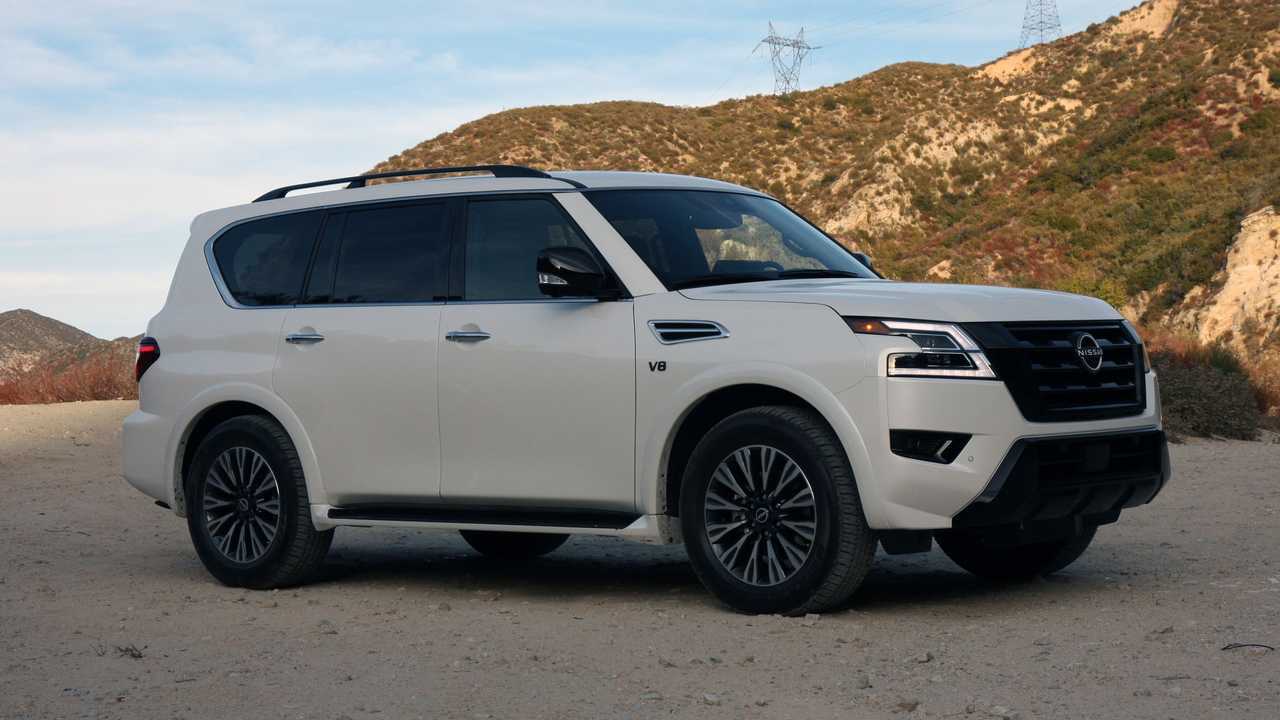
4. Nissan Armada
The Nissan Armada, a robust full-size SUV, caters to drivers who need strong towing capacity and off-road capabilities combined with luxury and comfort. Recognizing that many Armada buyers live in regions with severe winters, Nissan includes factory-installed block heaters on certain trims and markets as part of their cold-weather package.
This block heater warms the engine block and coolant, making it easier to start the large 5.6L V8 engine in cold conditions and reducing the likelihood of engine wear from cold starts. Nissan’s integration of the block heater into the Armada’s system is carefully engineered to maintain overall vehicle reliability and performance.
Unlike aftermarket solutions that can be cumbersome or unreliable, the factory-installed block heater is precisely calibrated to work in harmony with the Armada’s cooling and electrical systems. This ensures consistent operation even during prolonged freezing weather and reduces the risk of mechanical failure due to cold starts.
In addition to the block heater, Nissan equips the Armada with a variety of features that enhance winter driving, including heated front and rear seats, heated steering wheels, and remote start systems that allow owners to warm both the engine and the cabin from a distance.
These combined features provide a level of convenience and comfort that can make harsh winter mornings more bearable and safer. Furthermore, the Armada’s advanced four-wheel-drive system works alongside these features to maintain traction and control on icy or snowy roads.
The factory-installed block heater is also a critical feature for those who rely on the Armada’s towing capacity during winter months, as cold starts can stress an engine already tasked with heavy loads.
By preheating the engine, the block heater helps ensure that the vehicle performs reliably when towing trailers or hauling gear in frigid environments. This makes the Armada a well-rounded option for drivers who need both power and cold-weather readiness in one SUV.
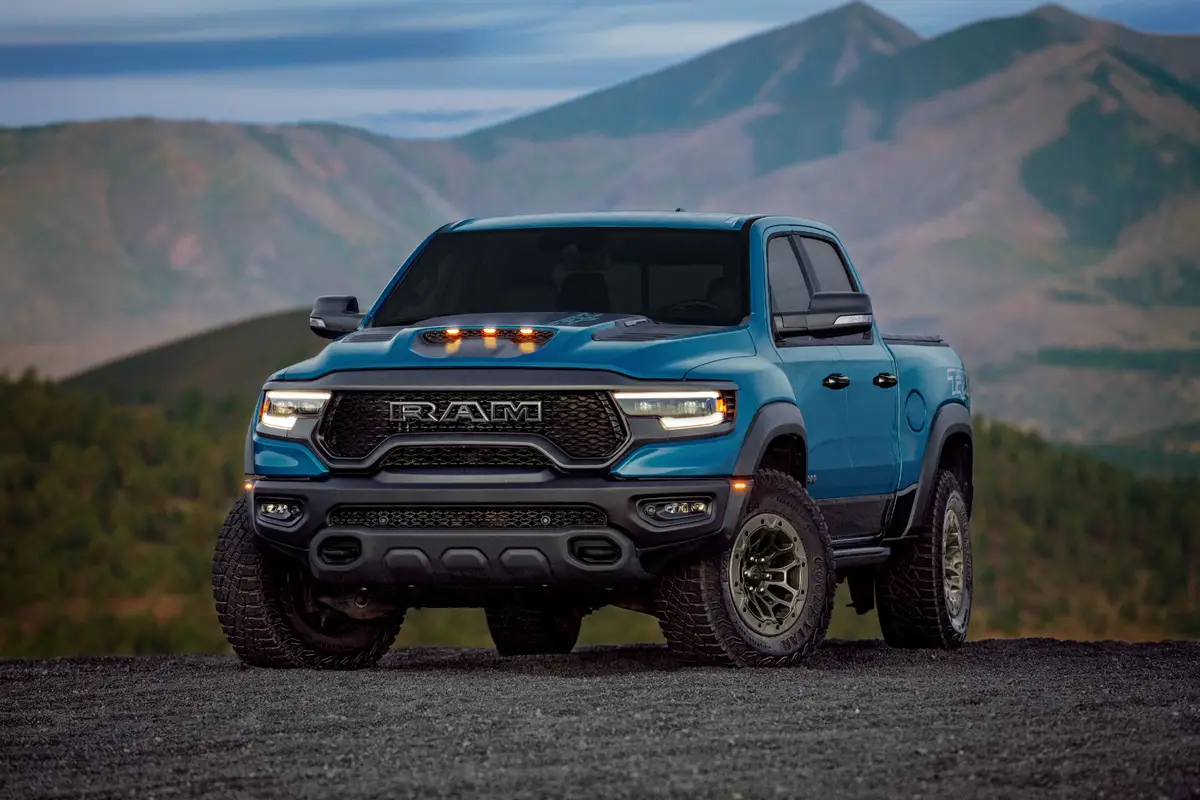
5. Ram 1500 (Cold-Weather Packages)
Though primarily categorized as a pickup, the Ram 1500 is frequently purchased as an SUV-like vehicle due to its spacious crew cab and luxurious features, making it a relevant entry in cold-weather vehicle discussions.
Ram offers factory-installed block heaters on many of its trucks equipped with cold-weather packages, a feature that also benefits the Ram 1500’s diverse engine lineup, including the 5.7L HEMI V8 and the EcoDiesel V6. These block heaters play a vital role in maintaining engine warmth in freezing conditions, enabling smooth starts and reducing strain on engine components.
Ram’s cold-weather packages typically bundle the block heater with heated seats, heated steering wheels, remote start, and upgraded batteries. This holistic approach ensures that both the mechanical systems and occupant comfort features work together to make winter driving less challenging.
The block heater specifically targets engine durability, preventing oil thickening and reducing the risk of battery failure in cold conditions, which is crucial for trucks often used in demanding work environments.
One advantage of the Ram 1500’s factory-installed block heater is its integration with the vehicle’s electrical system, allowing for efficient use of energy and seamless operation without the need for aftermarket modifications.
This factory integration also ensures the block heater is covered under warranty and meets rigorous quality standards, providing peace of mind to owners who might otherwise be concerned about reliability issues stemming from cold starts.
Finally, for those living in northern climates or working outdoors during winter, the Ram 1500’s combination of power, comfort, and cold-weather preparedness makes it a top choice. The block heater, alongside other winter-focused features, reduces downtime and mechanical issues caused by cold weather, helping keep this versatile truck running smoothly all season long.
SUVs Without Factory-Installed Block Heaters or Cold-Weather Prep
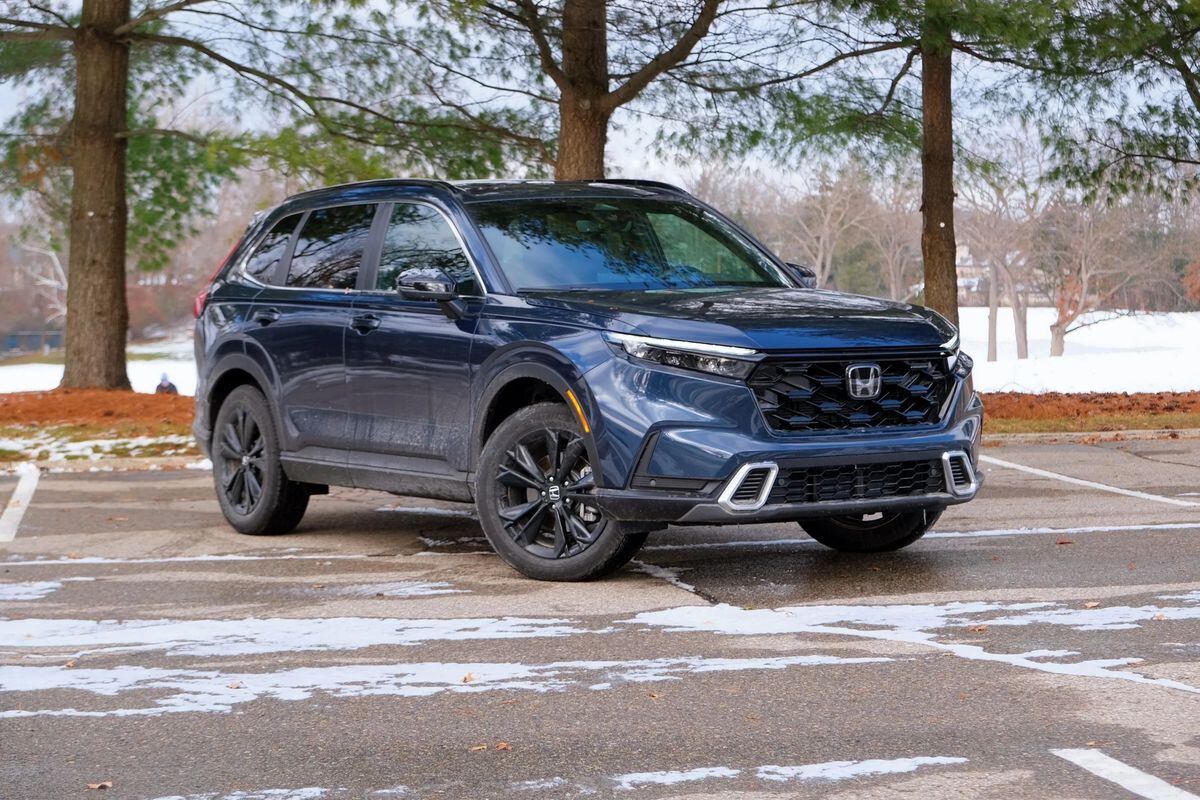
1. Honda CR-V
The Honda CR-V is one of the most popular compact SUVs globally, cherished for its reliability, fuel efficiency, and family-friendly design. However, despite its many strengths, the CR-V notably lacks a factory-installed block heater or any formal cold-weather preparation.
This absence is partly due to Honda’s strategy focusing more on moderate climates where extreme cold is less common. Consequently, CR-V owners in northern or colder regions must rely on aftermarket solutions or simply brave the winter months without the advantage of engine preheating, which can lead to challenges during cold starts.
Without a factory block heater, the CR-V’s engine block and fluids are more susceptible to the effects of freezing temperatures. Cold starts in subzero weather can cause the oil to thicken significantly, increasing wear on engine components and reducing battery performance.
While the CR-V’s modern engines are generally robust, repeated exposure to harsh winter conditions without preheating can accelerate mechanical wear and potentially shorten the engine’s lifespan. This issue is particularly acute for drivers who do not have access to heated garages or those who must start their vehicle several times a day in freezing conditions.
Honda does offer some cold-weather comfort features in certain CR-V trims, such as heated front seats and remote start, but these do little to address the mechanical challenges cold weather presents.
The absence of a block heater means the engine itself has to warm up entirely under its own power, which can lead to increased fuel consumption and emissions during the critical warm-up period. This gap in cold-weather preparation is a notable drawback for consumers in colder climates who are looking for an SUV that can perform optimally without extra winterizing efforts.
For CR-V owners living in snowy or icy regions, the lack of factory cold-weather prep often means investing in aftermarket block heaters or using external heating devices to protect their engines during winter. While these solutions can be effective, they lack the seamless integration and warranty coverage of factory-installed systems.
Additionally, without a block heater, owners may face longer wait times for the cabin to warm up and may have to endure rougher idling in the first few minutes of driving, underscoring a clear disadvantage compared to SUVs equipped with OEM cold-weather packages.
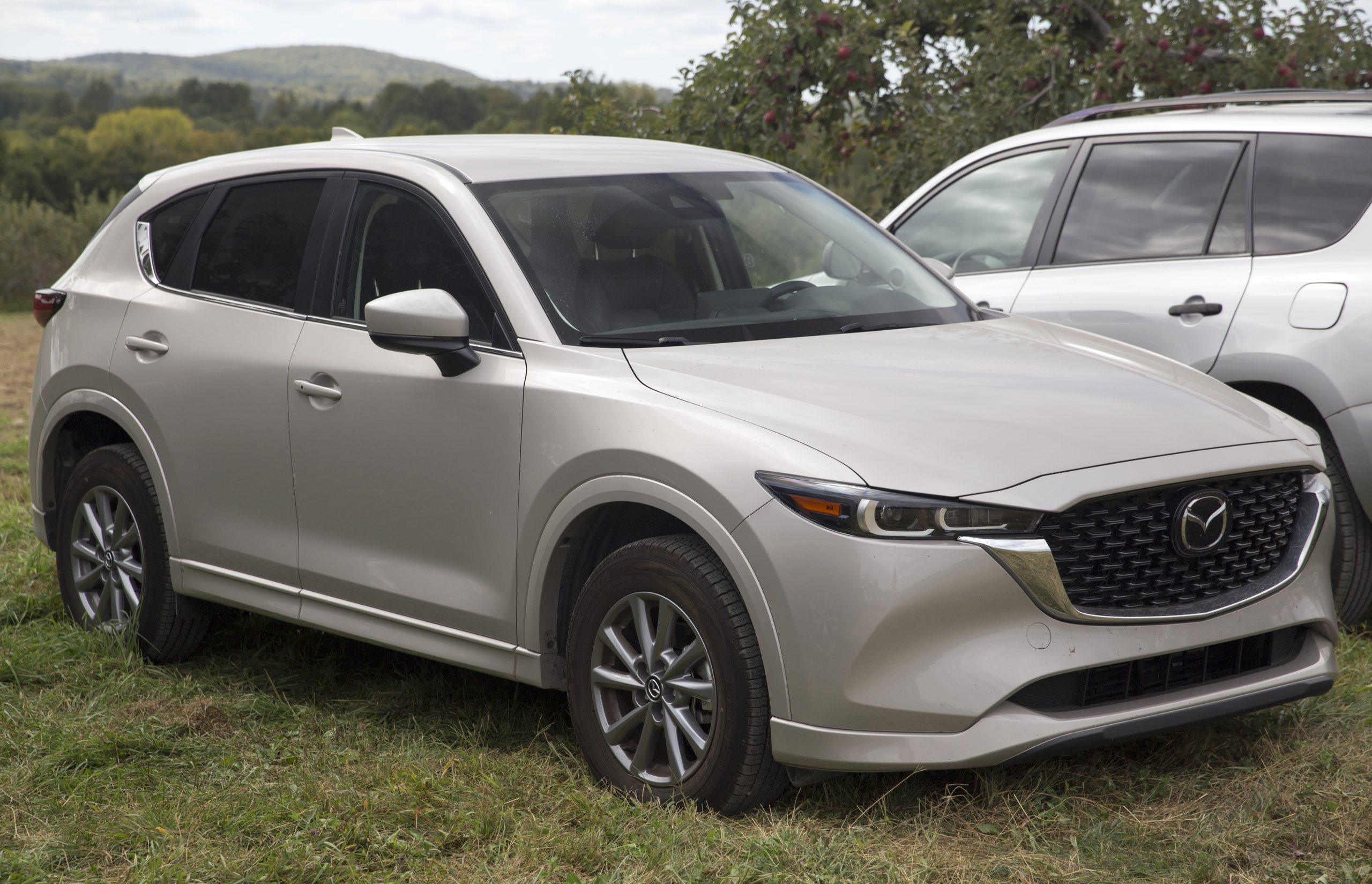
2. Mazda CX-5
The Mazda CX-5 is well-regarded for its sporty handling, sleek design, and upscale interior in the compact SUV segment. However, similar to the CR-V, Mazda does not provide a factory-installed block heater or comprehensive cold-weather package for the CX-5, even in markets that experience harsh winters.
This absence can be surprising for an SUV that aims to offer premium features and reliability, but it highlights Mazda’s strategic focus on moderate climates and its confidence in engine durability rather than proactive cold-weather components.
Operating the CX-5 in freezing conditions without a block heater means the engine experiences the full brunt of cold start challenges. Oil viscosity increases drastically in cold weather, creating more friction and strain on engine parts.
Without preheating, the CX-5’s 2.5L four-cylinder engine or turbocharged variants require more effort to start, which can lead to quicker battery depletion and increased fuel use. This situation can be particularly problematic for drivers who commute early in the morning or park their vehicles outdoors overnight during winter.
Mazda does equip some CX-5 trims with heated seats and steering wheels, which enhance occupant comfort but don’t mitigate engine wear. Additionally, while remote start systems are available, these do not warm the engine block or fluids directly; they merely warm the cabin, leaving the engine to rely on cold ambient temperatures for heat retention.
This shortcoming means drivers must be more mindful of winter driving conditions and consider supplemental preparations like engine block heaters installed by third parties or the use of synthetic oils formulated for cold climates.
Another consideration for CX-5 owners is that the lack of a factory block heater might affect resale value and appeal in northern states or countries where winter is long and severe.
Buyers in these markets often prefer vehicles with built-in cold-weather readiness for peace of mind. While the CX-5 excels in many other areas, its omission of factory-installed cold-weather hardware limits its effectiveness as a year-round SUV in extreme cold.
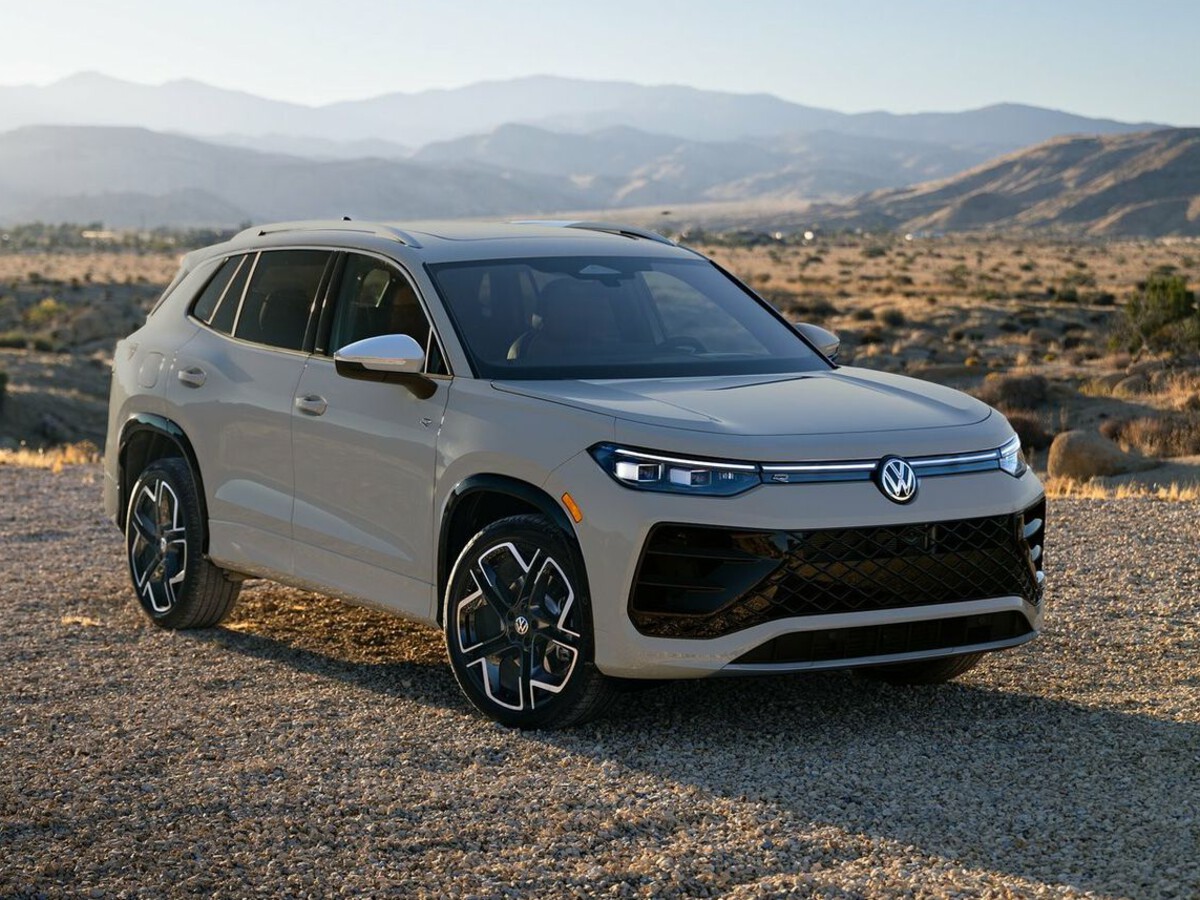
3. Volkswagen Tiguan
The Volkswagen Tiguan, a compact SUV with European styling and driving dynamics, similarly does not come equipped with a factory-installed block heater or dedicated cold-weather package.
Volkswagen’s approach to winter readiness often relies on the use of quality materials, solid build, and optional heated seats and steering wheels rather than mechanical aids such as block heaters. This makes the Tiguan less ideal for owners living in regions where temperatures regularly plummet far below freezing.
Cold weather presents several challenges for the Tiguan’s turbocharged four-cylinder engines, including thicker oil and reduced battery efficiency. Without a block heater, cold starts can be harsh, leading to longer warm-up times and increased engine wear.
For drivers who park outside in icy conditions, the Tiguan’s lack of engine preheating means increased chances of starting difficulties, including rough idling and slow engine response. Over time, these factors can contribute to decreased engine longevity and higher maintenance costs.
Volkswagen does offer heated seats and mirrors, plus optional remote start in certain trims, which provide comfort and convenience during winter. However, these features do not address the fundamental problem of engine cold starts.
Owners wanting to optimize their Tiguan for winter may need to install aftermarket block heaters or use engine heaters that plug into external power sources. While these can help, the absence of a factory-installed block heater means the vehicle does not come ready for cold weather straight from the factory, which is a disadvantage in harsh climates.
Additionally, the Tiguan’s drivetrain and traction control systems are competent in snowy and icy conditions, but mechanical systems can only do so much without proper engine preconditioning.
The lack of a factory block heater puts more responsibility on the driver to ensure the vehicle is adequately prepared for winter, including more frequent maintenance checks and the use of winter-grade oils and coolants to protect the engine.
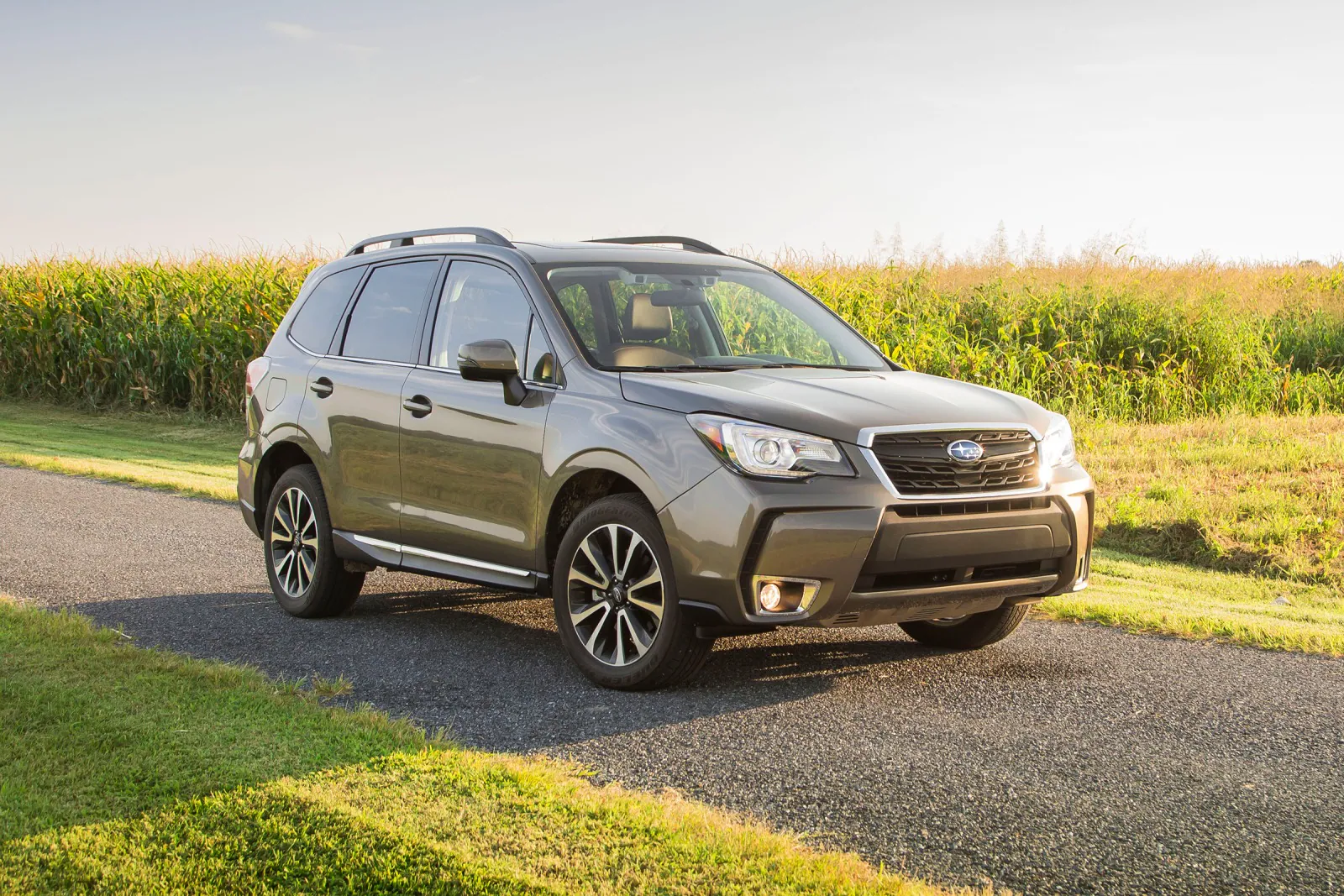
4. Subaru Forester
The Subaru Forester is renowned for its all-wheel-drive system and rugged versatility, making it a favorite among outdoor enthusiasts and those who frequently encounter snowy conditions.
Despite its winter-friendly reputation, the Forester does not come with a factory-installed block heater or a comprehensive cold-weather package from Subaru. This gap in cold-weather preparedness means that owners in frigid regions must rely on alternative solutions or risk the difficulties associated with cold starts.
Forester drivers benefit from the vehicle’s symmetrical all-wheel drive and good ground clearance, but engine starting in very cold weather remains a challenge without a block heater.
Subaru engines, while reliable, still experience the same issues with thickened oil and reduced battery capacity during freezing temperatures. The lack of a block heater means that cold starts can lead to increased engine wear, slower warm-up times, and greater emissions during engine warm-up phases.
To compensate, some Forester owners opt for aftermarket block heaters or heated garage storage to minimize cold-weather problems.
Subaru does include some winter comfort features like heated seats and heated mirrors in certain trims, but these features address only passenger comfort, not mechanical durability or engine health. Without OEM cold-weather equipment, Forester owners in extreme climates face additional challenges in maintaining their vehicles’ long-term reliability.
This absence is notable given Subaru’s strong brand association with winter driving and outdoor lifestyles. The lack of factory-installed block heaters or cold-weather packages in the Forester highlights a tradeoff in Subaru’s strategy: prioritizing all-weather traction and versatility over engine preconditioning.
Owners in colder climates who expect reliable cold starts and minimal engine wear will need to take extra measures to winterize their Foresters.
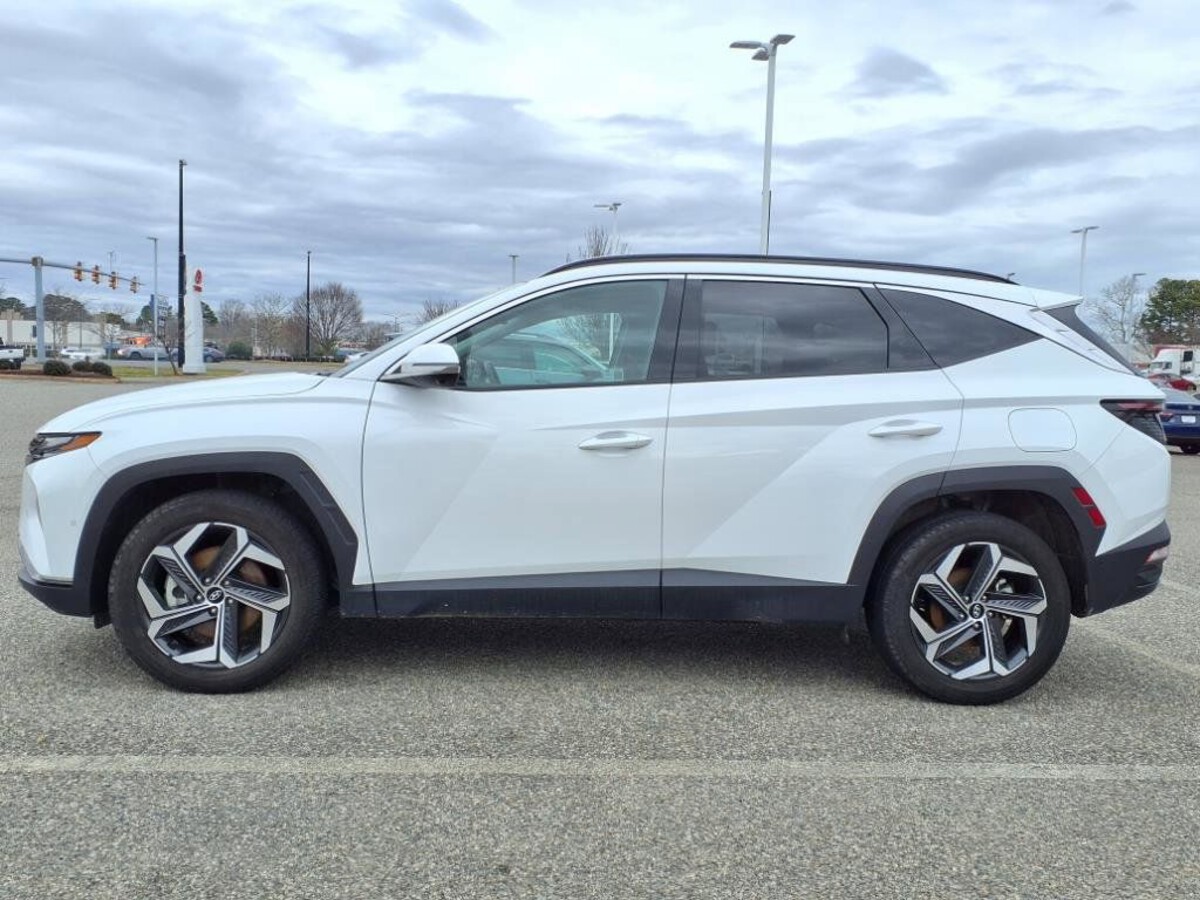
5. Hyundai Tucson
The Hyundai Tucson is a popular compact SUV known for its value, modern design, and feature-rich packages. However, it does not come with a factory-installed block heater or an official cold-weather prep package. This omission is particularly important for buyers in northern climates where winter temperatures can plunge well below freezing.
Without a block heater, Tucson owners must deal with the typical challenges associated with cold engine starts, including thickened oil, sluggish battery performance, and increased engine wear.
The Tucson’s engines, whether the base 2.0L four-cylinder or the more powerful turbocharged variants, are subject to the same mechanical limitations in cold weather as any other combustion engine.
Cold oil viscosity increases friction, making it harder for the engine to turn over and increasing strain on the starter motor and battery. Without a factory-installed block heater, these cold-start stresses accumulate over time, potentially leading to higher maintenance costs and reduced engine longevity.
While Hyundai offers heated front seats, heated steering wheels, and remote start features on some Tucson trims, these amenities primarily improve occupant comfort and convenience.
They do not mitigate the mechanical problems caused by cold starts. As a result, Tucson drivers in freezing climates are often advised to install aftermarket block heaters or use engine oil formulated for cold temperatures to protect their engines.
Furthermore, the lack of factory cold-weather preparation might be a disadvantage for Tucson owners who require a dependable SUV during winter months.
Buyers living in areas with severe winters often seek vehicles equipped with built-in cold-weather technology to reduce the hassle and potential damage caused by freezing temperatures. Hyundai’s omission of a block heater may make the Tucson less appealing to this demographic despite its many other merits.
After a thorough examination of SUVs equipped with factory-installed block heaters and cold-weather preparation versus those without, it is clear that these features play a critical role in defining a vehicle’s winter readiness, reliability, and owner satisfaction.
Factory-installed block heaters are not merely conveniences; they are essential components that protect the engine from the stresses of extreme cold, prevent premature mechanical wear, and improve fuel efficiency during the critical warm-up period after starting.
The value of these features becomes especially apparent in harsh winter environments where temperatures routinely fall well below freezing and vehicles are exposed to long durations of cold while parked.
SUVs such as the Ford F-150, Chevrolet Tahoe, Toyota Sequoia, Nissan Armada, and Ram 1500 demonstrate how manufacturers integrate block heaters and comprehensive cold-weather packages to ensure their vehicles are ready for winter’s toughest challenges.
These vehicles benefit from not only improved engine longevity but also from added comforts like heated seats, heated steering wheels, remote start systems, and heavy-duty batteries.
Together, these features create a winter-ready package that enhances safety, convenience, and overall driving experience during cold months. The integration of factory-installed block heaters means these SUVs come with quality-assured components designed specifically for their engines, backed by warranty coverage and tested for durability in severe conditions.
In contrast, many highly popular SUVs—such as the Honda CR-V, Mazda CX-5, Volkswagen Tiguan, Subaru Forester, and Hyundai Tucson—do not offer factory-installed block heaters or full cold-weather prep packages.
While these models may excel in other respects such as fuel economy, technology, and urban drivability, their lack of mechanical winter preparedness means owners must take additional steps to protect their vehicles during cold weather.
This often involves investing in aftermarket block heaters, synthetic cold-weather oils, or heated garages. Without these measures, owners face the risks of difficult cold starts, accelerated engine wear, increased emissions, and higher fuel consumption in winter.
These challenges underscore the importance of factory cold-weather features for those living in climates where freezing temperatures are routine. The absence of factory-installed block heaters also has implications for convenience and safety.
Without an engine preheater, drivers often experience longer warm-up times, delayed cabin heating, and the frustration of struggling with icy windshields or frozen door locks.
The lack of integrated remote start or other cold-weather amenities compounds these issues, making winter mornings more stressful and less comfortable. Over time, these small inconveniences can affect owner satisfaction and the overall perception of the vehicle’s reliability in winter.
Ultimately, the decision to prioritize factory cold-weather preparation when purchasing an SUV should be guided by a clear understanding of one’s local climate and personal driving needs.
For residents of northern states, mountainous regions, or places with long and severe winters, selecting an SUV with factory-installed block heaters and cold-weather packages is a wise investment.
The upfront benefit of reliable, efficient cold starts and enhanced comfort pays dividends in reduced maintenance costs, longer engine life, and safer winter driving. Conversely, those living in milder climates or who do not regularly face extreme cold may find SUVs without these features perfectly adequate, provided they take appropriate winterizing precautions when necessary.
In conclusion, factory-installed block heaters and cold-weather preparation packages are not merely optional extras—they are vital components that differentiate winter-ready SUVs from those less prepared to face freezing conditions.
By choosing a vehicle equipped with these features, consumers ensure peace of mind, greater reliability, and improved comfort during the most challenging driving season. For drivers who demand dependable performance no matter the weather, factory cold-weather readiness is an indispensable factor that should weigh heavily in any SUV purchasing decision.

